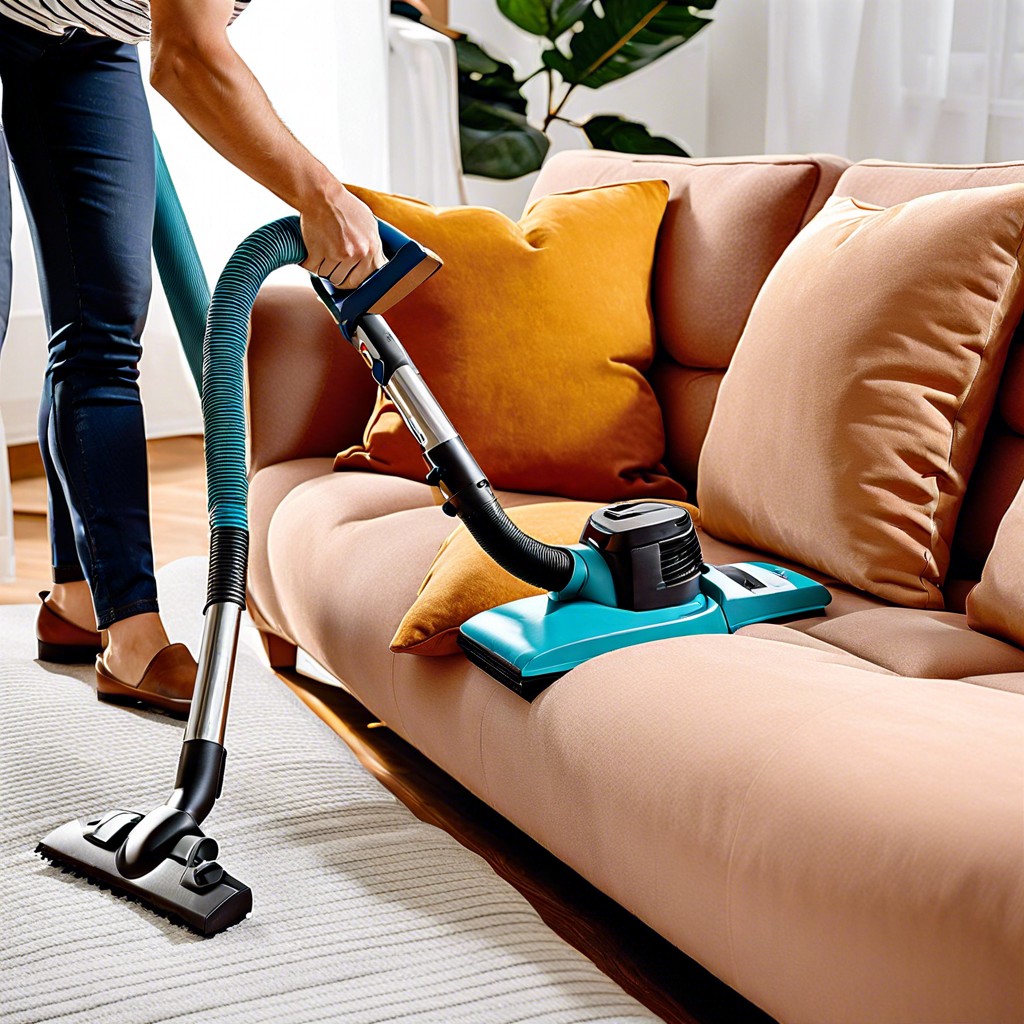Last updated on
Discover practical methods to remove cat hair from your couch quickly and effectively.
Key takeaways:
- Identify the material of your couch for specific cleaning techniques.
- Thoroughly vacuum your couch using an upholstery attachment.
- Regularly groom your cat to reduce shedding.
- Follow cleaning guides specific to different types of upholstery.
- Follow maintenance routines like consistent vacuuming and using washable couch covers.
Table of Contents
Understanding Your Sofa Type
Identifying the material of your couch is crucial as different fabrics require specific cleaning techniques. For example, leather and faux leather surfaces can be wiped down easily, while upholstered fabrics might need more thorough methods. Delicate materials like silk or velvet call for gentle handling to avoid damage.
Look for care labels or manufacturer’s instructions that provide guidance on proper maintenance. This will not only ensure the longevity of your furniture but also make the process of removing cat hair more efficient and effective.
Vacuum for the Deepest Clean
Start with a thorough vacuuming using an upholstery attachment to loosen and remove most of the cat hair embedded in the fibers. Ensure the vacuum is set to the appropriate suction level to avoid damaging the fabric. A crevice tool can be particularly effective for getting into the seams and folds of the couch.
For sofas with a woven texture, consider using a rubber squeegee or a dry sponge after vacuuming to lift any remaining hair. This method creates static electricity, which helps pull out the more stubborn strands that the vacuum may not catch.
Regular vacuuming, ideally once a week, can significantly reduce the buildup of cat hair. For daily touch-ups, a lint roller or tape wrapped around your hand with the sticky side out can pick up stray hairs quickly.
Groom Your Cat Regularly to Reduce Shedding
Regular brushing minimizes excess fur by capturing loose hair before it ends up on the couch. Depending on your feline’s coat length and type, find a brush or comb that suits them. Short-haired cats benefit from weekly brushing, while long-haired breeds may require daily grooming to prevent tangles and reduce shedding. Also, a de-shedding tool can be an excellent investment during peak shedding seasons. Adding a balanced diet and omega-3 fatty acid supplements can promote a healthy coat and decrease the overall quantity of shed hair. By incorporating these steps into your routine, your pet will not only look better but also contribute to keeping your sofa cleaner.
Cleaning Guides for Different Types of Upholstery
When addressing varying upholstery materials, tailor your cleaning methods to protect the fabric:
1. Leather and Faux Leather: Use a damp cloth to gently wipe the surface; a rubber pet hair removal brush can also be effective. Avoid sharp objects and overly wet cloths, as these can damage the material.
2. Fabric Upholstery: Roll a lint roller over the surface for quick hair removal. Alternatively, lightly dampen a microfiber cloth and gently swipe to collect hair. Fabric-specific tape rollers are also an efficient option.
3. Velvet: Due to its delicate nature, use a soft-bristled brush, moving in the direction of the nap to lift and collect hair without damaging fibers.
4. Microfiber: Employ the squeegee method by dragging a clean rubber squeegee across the surface to pull hair from the tiny fibers.
5. Synthetics (like Polyester or Nylon): Static attraction makes pet hair stick to synthetic fibers; use antistatic sprays before sweeping off the hair with a brush or cloth to make the process easier.
Regularly treating your upholstery with a fabric protector can create a barrier that makes future cleaning of pet hair much simpler. Remember to always spot-test any method on a small, unseen area to ensure it doesn’t damage the material.
Maintenance Routines to Keep Your Couch Hair-Free
Consistent vacuuming is your first line of defense; aim to vacuum at least once a week using an upholstery attachment.
Invest in washable couch covers that can be easily removed and cleaned; this is especially useful for homes with multiple pets.
Utilize lint rollers for quick touch-ups before guests arrive; keep one handy in the living room for convenience.
Incorporate the use of anti-static sprays if static cling makes fur removal challenging — a light spritz on the couch can help.
Ensure you’re grooming your cat with the appropriate brushes and tools; lesser fur on the couch starts with lesser fur on your cat.
Consider designated pet blankets or beds to entice your cat to favor those over the couch.
A damp rubber glove can quickly gather fur by simply running your hand over the couch fabric; rinse and repeat as needed.
By establishing these regular habits, keeping your couch hair-free becomes a manageable task, sustaining both cleanliness and the comfort of your living space.
You may also like to read:


